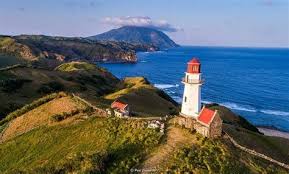Batanes, known as “The Home of the Winds,” is famed for its rolling hills, rugged coastlines, and picturesque stone houses, offering a serene escape amid nature’s beauty.
ADVERTISEMENT

Table of Content

Batanes: The Home of the Winds
Batanes, often called “The Home of the Winds,” is the northernmost province of the Philippines, known for its breathtaking landscapes and unique cultural heritage. Located in the Luzon Strait, Batanes is famous for its strong winds, especially during the typhoon season, which have shaped its rugged coastlines and rolling hills. The province consists of a group of small islands, with Batan, Sabtang, and Itbayat being the most prominent.
Batanes is also renowned for its traditional stone houses with thick cogon grass roofs, designed to withstand the harsh weather conditions. The Ivatans, the indigenous people of Batanes, have a distinct culture that is deeply connected to the land and sea, living in harmony with their natural environment. The province’s isolation has allowed its natural beauty to remain largely unspoiled, with stunning cliffs, vast pasturelands, and pristine beaches.
Aside from its scenic beauty, Batanes is known for its peaceful and welcoming atmosphere, where crime is almost nonexistent, and the Ivatans are known for their honesty and hospitality. Whether it’s the stunning views from Marlboro Hills, the dramatic landscapes of Valugan Boulder Beach, or the charm of Sabtang’s traditional villages, Batanes offers a unique and tranquil escape, making it a true gem of the Philippines.
I. Introduction
Overview of Batanes:
Batanes is the northernmost province of the Philippines, located in the Luzon Strait, closer to Taiwan than mainland Luzon. It consists of 10 islands, with Batan, Sabtang, and Itbayat being the three inhabited ones. Known for its unique landscapes and isolation, Batanes offers an experience unlike any other in the Philippines. The province’s geography, architecture, and culture are shaped by its position in the Pacific Ocean, subject to strong winds and frequent storms.
Nickname – The Home of the Winds:
Batanes has earned its title due to the strong and persistent winds that sweep across the islands, particularly during typhoon season. These winds, combined with its dramatic landscapes of cliffs, rolling hills, and rugged coastlines, give Batanes a distinct character and charm that captures the imaginations of those who visit.
II. Geography and Natural Beauty
Location and Composition:
Batanes is composed of a group of islands located in the Luzon Strait, marking the northern boundary of the Philippines. Its strategic position has made it an important, albeit remote, region.
Batan Island:
The largest and most populated, home to the capital Basco, and major attractions such as the Basco Lighthouse, Marlboro Hills, and Valugan Boulder Beach.
Sabtang Island:
Famous for its traditional stone houses and pristine beaches, offering visitors a glimpse of authentic Ivatan life.
Itbayat Island:
Known for its rugged terrain and being the northernmost inhabited island in the Philippines, Itbayat is accessible by a challenging boat or plane ride.Rolling Hills and Cliffs:
Marlboro Hills (Rakuh-a-Payaman):
One of Batanes’ most iconic landscapes, these expansive rolling hills offer panoramic views of the sea and mountains. The area is often referred to as Batanes’ “New Zealand” due to its stunning scenery, with endless grassy fields and grazing cows.
Valugan Boulder Beach:
A unique beach lined with smooth, large boulders that were formed from volcanic activity. This beach is a photographer’s paradise, especially during sunrise when the light hits the massive rocks and the waves crash onto the shore.Rugged Coastlines and Pristine Beaches: Batanes is known for its jagged coastlines, where towering cliffs drop down to the crashing waves of the Pacific Ocean. Pristine beaches such as Homoron Blue Lagoon and Morong Beach on Sabtang Island are secluded and untouched, perfect for those looking to escape into nature.
III. Cultural and Historical Significance
The Ivatan People:
Indigenous Inhabitants:
The Ivatan people, the indigenous inhabitants of Batanes, have lived in harmony with the land and sea for centuries. Their culture is deeply rooted in nature, and they have developed unique practices to survive in the harsh and wind-swept environment.
Resilience and Honesty:
The Ivatans are known for their resilience and ability to adapt to their challenging environment. Honesty is a hallmark of their culture, famously exemplified by the “honesty cafes” where goods are left unattended, and customers pay on the honor system.
Traditional Stone Houses:
Tukon and Chivuvuhung Style Homes:
The traditional Ivatan houses are designed to withstand the strong winds and typhoons that frequently batter the islands. These houses are made of limestone, coral, and cogon grass, with thick walls and steep, sturdy roofs.
Preservation of Heritage:
The stone houses are a defining feature of Batanes and are particularly well-preserved in villages like Savidug and Chavayan on Sabtang Island, where visitors can experience the architectural legacy of the Ivatans.Local Traditions and Festivals:
Palu-Palo Festival:
This annual festival celebrates the culture and history of Batanes, with performances, parades, and traditional Ivatan music and dance. The festival honors the resilience of the Ivatan people and their rich cultural heritage.
IV. Major Attractions
Basco Lighthouse:
One of the most iconic landmarks in Batanes, located on Naidi Hill in Basco. The lighthouse offers stunning views of the Batan Island coastline, the South China Sea, and Mount Iraya. It’s a popular spot for watching the sunset and getting panoramic photos of the island.
Sabtang Island:
Traditional Ivatan Villages:
Sabtang is famous for its well-preserved Ivatan villages like Savidug and Chavayan, where visitors can explore stone houses and learn about the island’s history and traditions. The island also boasts beautiful beaches like Morong Beach, known for its natural rock arch.
Cultural Immersion:
Sabtang Island offers opportunities for cultural immersion, where visitors can witness traditional Ivatan weaving, farming, and fishing practices that have been passed down through generations.
Itbayat Island:
Northernmost Inhabited Island: Known for its rugged landscapes and remote location, Itbayat offers a more challenging but rewarding experience. The island is surrounded by cliffs that plunge dramatically into the ocean, and its terrain is marked by rolling hills, caves, and limestone formations.
V. Adventure and Eco-Tourism
Hiking and Biking:
Popular Hiking Trails:
Batanes offers numerous trails for hiking enthusiasts, from easy coastal walks to more challenging treks up Mount Iraya, an active volcano on Batan Island. The trails offer stunning views of the islands’ unique landscapes, cliffs, and beaches.Biking Across the Islands: Biking is a popular activity in Batanes, especially for those who want to experience the islands at their own pace. The well-paved roads and stunning scenery make it ideal for cyclists exploring the hills, villages, and coastlines.
Boat Tours:
Island-Hopping Adventures:
Boat tours between the islands of Batan, Sabtang, and Itbayat allow visitors to explore hidden coves, secluded beaches, and remote fishing villages. These tours provide an opportunity to see the islands from a different perspective and witness the stunning natural formations along the coast.
Nature Exploration:
Wildlife and Birdwatching:
Batanes is home to a variety of endemic and migratory bird species, making it an excellent destination for birdwatching. The islands’ unique biodiversity and conservation efforts make it a haven for nature lovers and eco-tourists.
VI. Weather and Climate
Windy and Typhoon-Prone:
Batanes is situated in a region that experiences strong winds year-round, especially during the typhoon season from June to November. These winds have shaped the islands’ geography and way of life, with the Ivatans developing sturdy homes and farming techniques to adapt to the harsh conditions.
Best Time to Visit:
The best time to visit Batanes is during the dry season, from March to June, when the weather is more stable and ideal for outdoor activities like hiking, biking, and island hopping. During this period, visitors can fully enjoy the beauty of the islands without the threat of storms.
VII. Preservation and Sustainability
Eco-Tourism Initiatives:
Sustainable tourism practices are encouraged to protect Batanes’ fragile ecosystems and ensure that its natural and cultural heritage is preserved for future generations. Programs include waste management, conservation of natural resources, and community-based tourism that benefits the local population.
Unspoiled Natural Beauty:
Batanes has remained largely unspoiled due to its isolation and the strong cultural emphasis on environmental preservation. The local government, together with the Ivatans, works to maintain the natural beauty of the islands while promoting responsible tourism.
Conclusion
Batanes, known as “The Home of the Winds,” offers a truly unique and captivating experience for travelers seeking a serene escape in one of the most untouched regions of the Philippines. With its dramatic landscapes, rolling hills, traditional stone houses, and rich Ivatan culture, Batanes provides a glimpse into a world where nature and tradition coexist in harmony. Its remote location and commitment to preserving both its environment and cultural heritage make Batanes an ideal destination for those looking to connect with nature and explore a simpler, more peaceful way of life. A visit to Batanes is not just a journey through scenic beauty but a meaningful encounter with the rich traditions and resilient spirit of its people.
Disclaimer
The information provided about Batanes is intended for general reference purposes only. While efforts have been made to ensure accuracy, details such as travel conditions, accessibility, and weather may change. Visitors are encouraged to verify current information with local authorities or tourism offices before planning their trip. This content does not guarantee specific experiences or the availability of activities mentioned. Always respect local customs and regulations, and practice responsible tourism to help preserve Batanes’ natural and cultural heritage.
About author
Kween Yulo is a seasoned SEO writer with 15 years of experience, specializing in diverse niches across the digital landscape. Her expertise spans various industries, including gaming, e-commerce, finance, travel, and lifestyle. Known for crafting engaging, optimized content, Kween’s writing is tailored to boost search rankings and enhance user engagement. Her deep understanding of SEO trends, keyword strategies, and audience behavior has made her a trusted content creator for businesses seeking to strengthen their online presence. Kween’s versatility and dedication to quality make her an asset in any digital content strategy.


